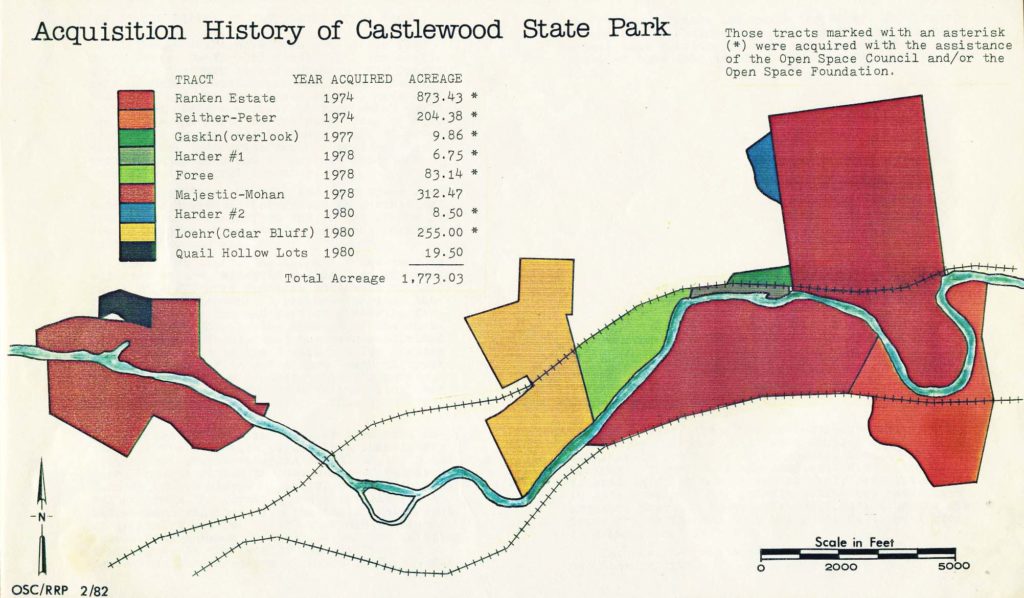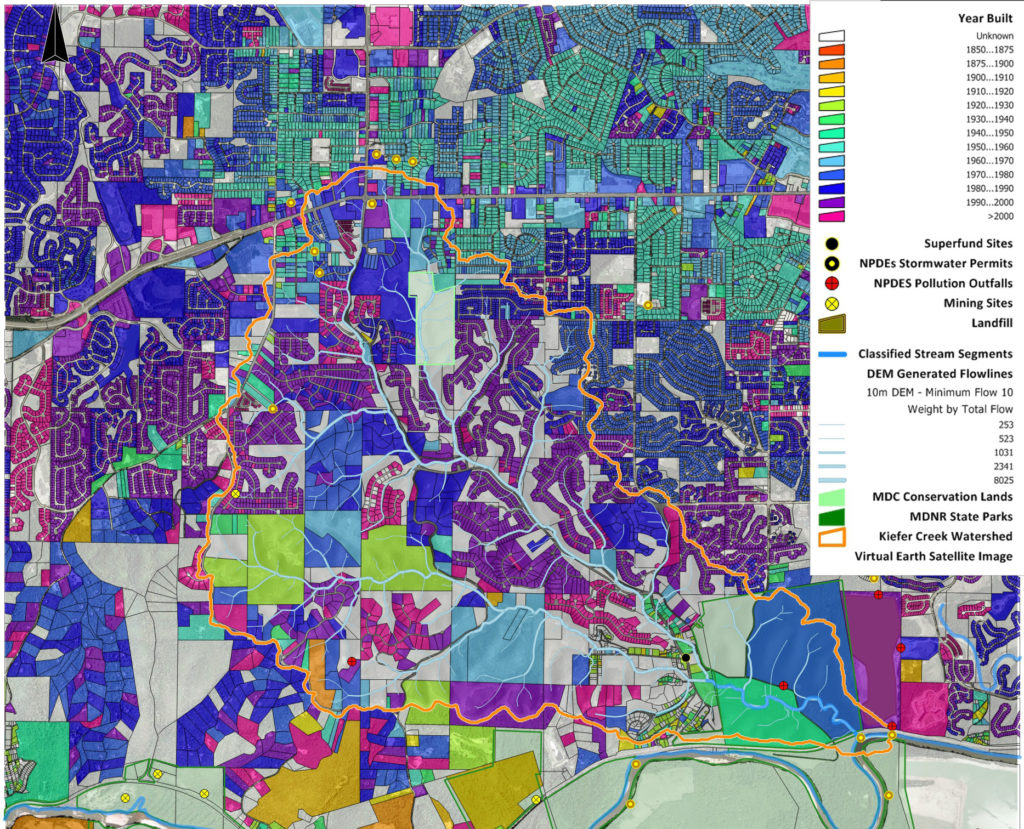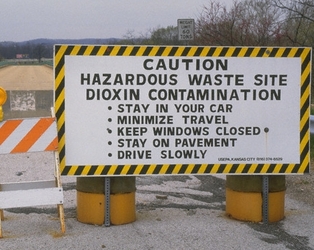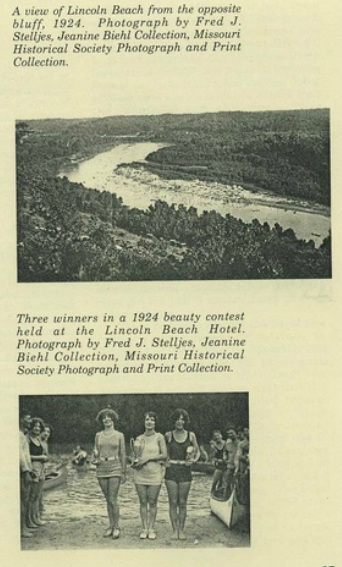Castlewood Village: A Vacation Destination for St. Louis
In the early 20th century, clubs and vacation homes were developed along the Meramec River. The Missouri Pacific Railroad brought hot city dwellers to cool down in the river, and Castlewood Village kept them entertained with hotels, clubs, bathhouses and more. Much of the development occurred over the limestone bluffs north of the Meramec and the railroad tracks. The seclusion of these bluffs attracted visitors, and during prohibition there was a robust drinking and gambling culture away from the eyes of the authorities. Mobsters even used the area as a hide-out when they needed to drop off the map.
In the 1950s, the clubs and hotels began to shut down. As the cost of cars and air conditioning decreased, fewer people took the train to Castlewood to escape the city’s heat. Family homes replaced the vacation culture, but the area remained relatively secluded. In the 1970s, the expanding St. Louis suburbs began to encroach upon the Kiefer Creek watershed. Unlike its neighbors, however, the Kiefer Creek watershed largely retained its natural landscape and avoided the extensive development that has blanketed the neighboring Fishpot Creek Wateshed.

In order to ensure that this beautiful area was not destroyed by the rapidly encroaching suburbs, the Open Space Council of St. Louis helped the state acquire some of the land in 1974, and they created Castlewood State Park.
The Road to Development

By 1990, as the map to the left shows, neighboring watersheds were quite developed, while the Kiefer Creek watershed remained largely untouched. The watershed retained a large amount of its tree cover and natural spaces. This has made Kiefer Creek what it is today: a beautiful stream that attracts people with its pools and clear, flowing water.
Since 1990, there has been a fair amount of expansion into the watershed, primarily in the northern part of the watershed. The southeast section of the watershed still looks much like it did in 1990.
Superfund Site
Most everyone has heard of Times Beach, the town 17 miles west of St. Louis that was abandoned and disincorporated in 1983 because of dioxin contamination. Less well known are the other sites in the area that were also contaminated at the same time, one of which is located in the Kiefer Creek watershed, just west of Castlewood Park at Sontag Rd. and New Ballwin Rd.

The contamination occurred in 1972 when Russell Bliss, a waste oil hauler, was contracted to spray waste oil on gravel roads to reduce dust. Ten years later, the EPA discovered that the oil was contaminated with dioxins. Bliss acquired the oil from the Northeastern Pharmaceutical and Chemical Company (NEPACCO), which had produced it while making hexachlorophene, a disinfectant for a face wash. During the investigation, Bliss said he was not informed that the waste oil had dioxins in it. However, NEPACCO claimed he was informed, as they were legally required to tell him, and they paid him to haul it away, a practice only done with hazardous materials.
In 1983, the EPA began to clean up the site under the Comprehensive Environmental Response, Compensation, and Liability Act, known more commonly as “Superfund.” They temporarily relocated the residents, then removed the first few inches of soil and stored it in containment bins on Sontag Rd. At the time there was no appropriate technology to dispose of the dioxins, so the soil remained there for 13 years. In 1996, the soil was brought to Times Beach and incinerated with the contaminated soil from the other sites. They tested the area for remaining contamination and found that it had been thoroughly removed. That said, there is a marked lack of new development in areas that were part of the Dioxin cleanup. In a way this may have protected some of the most fragile riparian and forested areas from the impacts of impervious surfaces from developments. Kiefer Creek is spring fed and it flows every day of the year because the natural flora, fauna, and geology still function. The rainfall is absorbed into the ground where it joins an aquifer that feeds numerous springs in the watershed.

This website and other efforts related to the Kiefer Creek Restoration Project are partially funded by the Environmental Protection Agency Region 7 through the Missouri Department of Natural Resources, under Section 319 of the Clean Water Act. MoDNR Subgrant G11-NPS-21.

